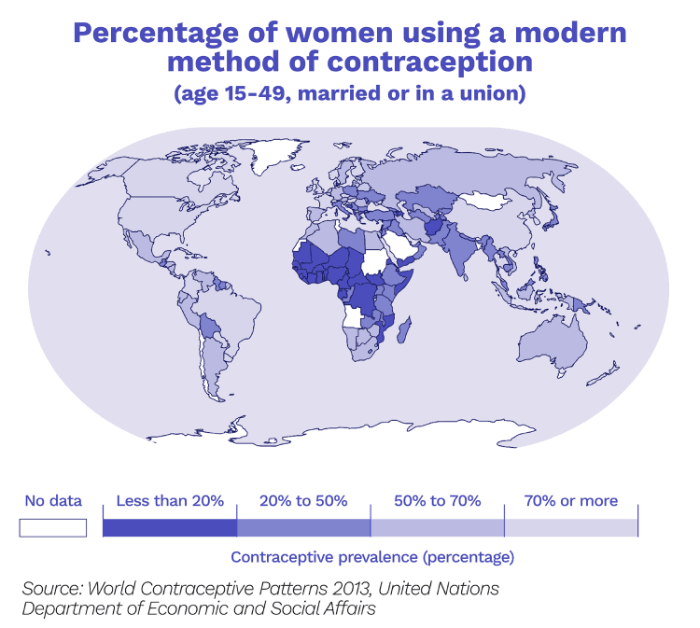Women & Climate Change: Solving Climate Change and Empowering Women
12 minute read
Updated on: 29 Aug 2021
We all experience the world differently. To solve climate change, therefore, we must consider everyone’s points of view. Empowering women is fundamental to building a better future - in terms of both society and the environment.
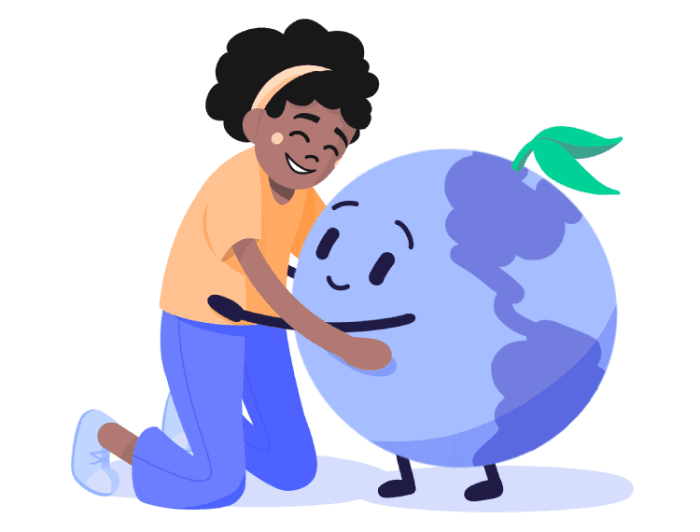
There are so many ways in which women can help fight the climate crisis, we just don’t have time to cover them all here. In this chapter we’re going to look at just three ways that gender equality could help solve climate change: improving access and equality in farming, family planning, and climate leadership.
Women farmers in the developing world
In the developing world, land that is farmed by women produces 20-30% fewer crops than land farmed by men . Why does this ‘gender yield gap’ exist?
The evidence is clear: women’s farming skills are just as good as men’s , but they struggle to access equal opportunities and resources. This leaves them at a disadvantage
.
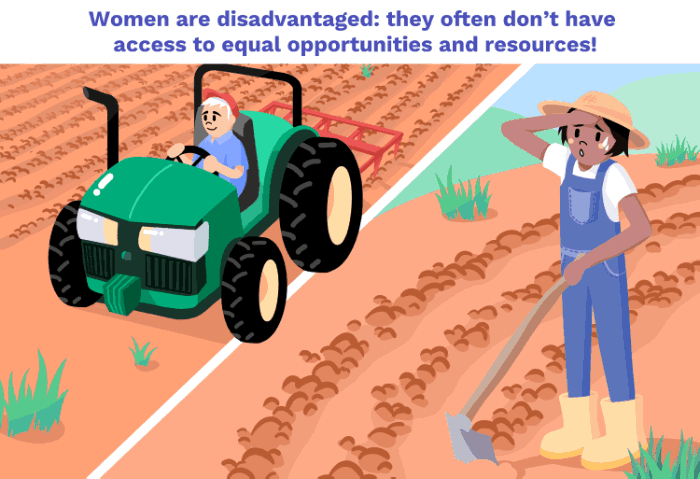
Woman vs man opportunities
In developing countries, 43% of agricultural work is done by women . Therefore, with almost half of all farmers suffering poor productivity, gender inequality is a real threat to global food security
.
By increasing women’s farming productivity, more food can be produced on existing farmland, meaning fewer forests would need to be cleared for additional fields to grow food .
Furthermore, raising women’s agricultural productivity could result in 100-150 million fewer people living with hunger , and improve the quality of life for children globally
.
Owning and controlling land
Secure access to land is a basic requirement for farming . However, land ownership laws often favour men
. This leaves women’s land rights dependent on their male relatives
. Across the developing world, women are less likely to own and control land than men, and the land they do acquire is often smaller and less fertile
.
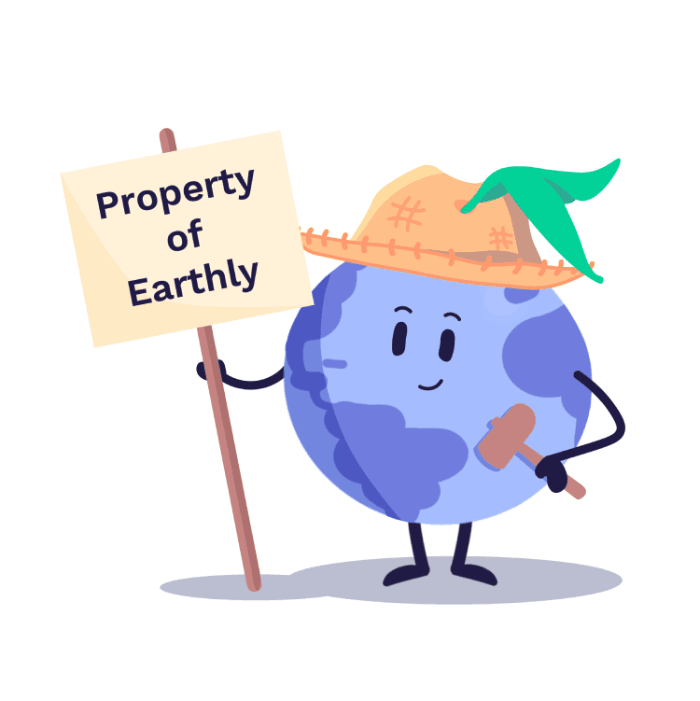
Earthly in a straw hat hammering
Even worse, this makes banks more hesitant to offer loans to women, leaving them unable to buy agricultural technology that could boost their productivity .
With ownership of land, farmers are secure in the knowledge that they will enjoy the future benefits of good management . This makes them more likely to invest in sustainable agriculture practices that increase yield and avoid unsustainable deforestation
.
Making time for women
Women’s farms are also less productive than men’s because their other duties limit how much time they can spend farming .
As well as farming, women are traditionally responsible for domestic duties, such as caring for children and the elderly, maintaining the home, and preparing food .
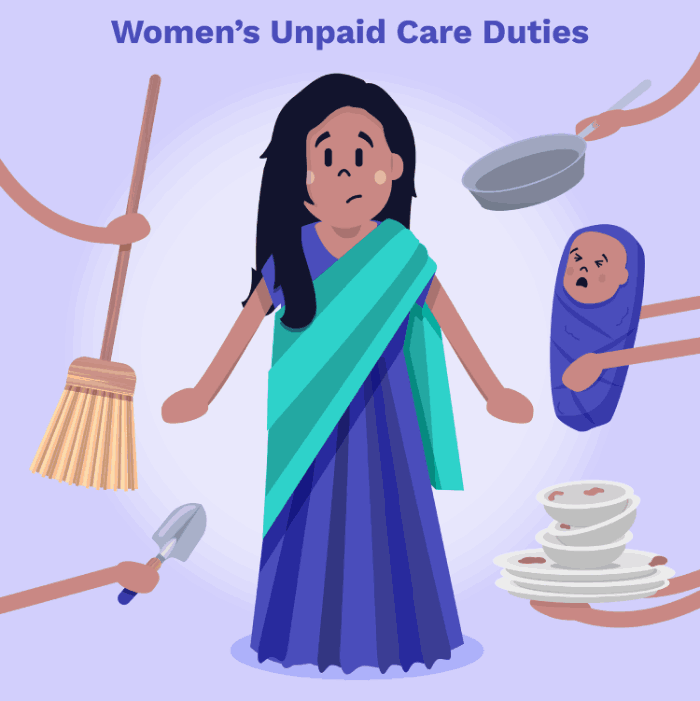
Women’s unpaid care duties
That’s a staggering ten times longer than men, who only spend an average of around 35 minutes on unpaid duties per day . In fact, this is a pattern that is seen throughout the world, in both rich and poor countries
.
Globally, women do on average 2.5 times more unpaid work than men .
Unpaid domestic duties are completely essential to keep families happy and healthy but are often overlooked, and are far more time consuming than they need to be .
Simple solutions, like building local wells, can free up women’s time . This could help close the gender gap in agricultural productivity as it would allow women to spend more time farming, if they choose
.
A second way to boost women’s farming productivity is to help them become more efficient farmers .
Tasks that are traditionally done by men, such as ploughing fields, tend to use animal power to be more efficient . By contrast, tasks that are traditionally done by women, like weeding and harvesting, are not often mechanised
. Instead, they are done with traditional manual tools and are very time consuming
.
In India, women typically weed soybean fields using traditional hand tools whilst bending or squatting. This is slow, uncomfortable, and can cause injuries .
Take a look:

Weeding soybean fields with manual tools
Improved tools reduce the work burden on women and increase their efficiency .
This is the improved ‘twin wheel hoe’ which is used to weed soybean fields while standing:
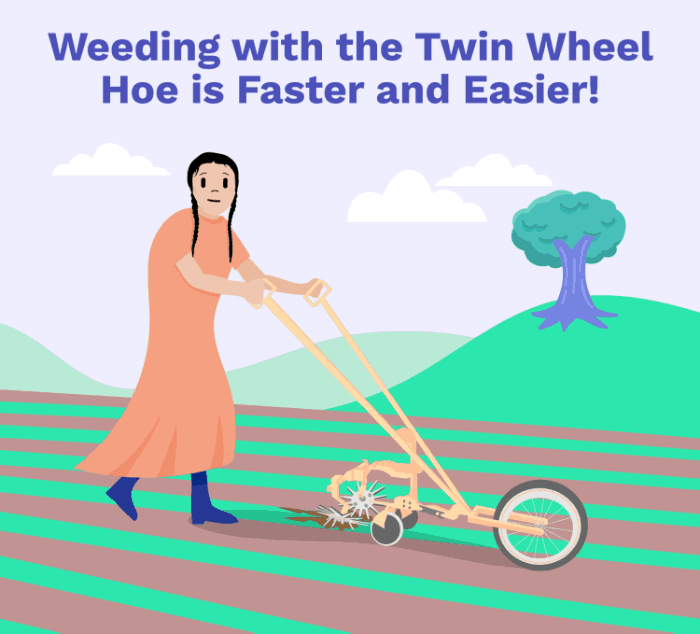
Weeding with the twin wheel hoe
This tool halves the time used for weeding and greatly reduces physical strain .
Ensuring that women have strong land rights, as well as the facilities and tools to manage their time effectively, not only opens up more opportunities to them, but also increases yields on existing farmland, which is good for the planet too .
Family planning

Family planning
Family planning is about enabling women to choose if they want children, how many they want, and when they want to have them . This is achieved with the use of modern contraceptive methods
.
In 2019, 24% of women in the world who wanted to use family planning did not have access to the contraceptives they needed .
As a result, these women experience high rates of unplanned pregnancy .
The situation is worse in the developing world : 225 million women from low income countries say that they want to choose if and when they become pregnant, but they can’t because they can’t access contraception
.
The solution is to ensure everyone has equal access to contraceptives.
Firstly, family planning and contraceptives give women power over their lives and bodies . With control over their reproductive health, young women are more likely to finish their education and lay the foundation for their future
. Women can plan their pregnancies around their careers and personal circumstances, allowing them to choose and pursue their ambitions
.
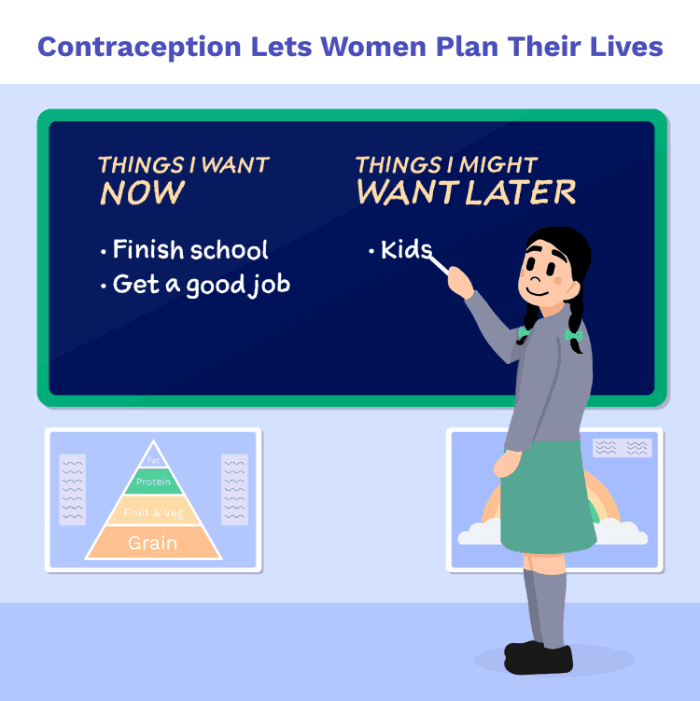
Contraception lets women plan their lives
Secondly, through empowering women, providing family planning services also benefits the environment .
With widespread contraception, women tend to have fewer children , which can reduce global emissions
.
Increasing family planning would slow population growth by preventing the unplanned births that might have happened without contraception .
In fact, family planning has huge potential to reduce predicted global emissions, especially when combined with educating girls (take a look at the chapter on education).
Family planning and girls’ education together could reduce global emissions by 85.4Gt CO₂e by 2050 .
That’s over 1.5 times the total emissions produced in 2018 ! By slowing population growth, family planning and education could provide 16-29% of the reduction in emissions needed to avoid climate warming of over 2ºC
.
Astonishingly, family planning reduces emissions at a cost of only US$4.50 per tonne of CO₂e that is not emitted due to the resulting reduction in population growth !
Women as climate leaders
Globally, power is not shared equally between genders . As of October 2019, only 24.5% of all countries’ politicians were women
. Although the gender gap in politics is found throughout the world, it is particularly large in Sub-Saharan Africa, South Asia and the Arab States
.
Why does this gender gap exist? Because women face many barriers to political inclusion .
So, why does this matter to climate change?
Women make up most of the world’s poor and vulnerable people , which means that they are usually the most severely impacted by climate change
.
If women are not included in climate decision making, their needs won’t be provided for and existing inequalities will deepen .
But including women in political decisions isn’t only the right thing to do; it is also the smart choice for people and the environment .
Different genders experience the world differently and so have different needs, but they also have different expertise . Especially across the developing world, women’s traditional duties mean that they have a unique understanding of environmental conservation
. To combat climate change, we need to use the knowledge and skills of both men and women
!
What’s more, women tend to have different opinions and perspectives to men, which can help make balanced policies . When making decisions, women often consider their family and community as well as themselves
. Also, women generally avoid risk-taking and show greater concern for the environment
.
So, is it likely that including women in decision-making and leadership is already helping the environment? There is a pattern where equality for women in leadership tends to come alongside better climate actions . Here are just a few examples:
Other factors could also affect these trends, and leaders of any gender can make both good and bad decisions. Nonetheless, leadership with increased diversity generally performs better . Empowering women as decision makers and international leaders could reduce inequality and help fight climate change
.

Conclusion
Through empowering women we can build the future we want for humanity. In this future, people of all genders have the power to make choices and have access to the resources they need to live healthy, sustainable and fulfilling lives.
And, in achieving this world, we may even stop climate change too.
Next Chapter


